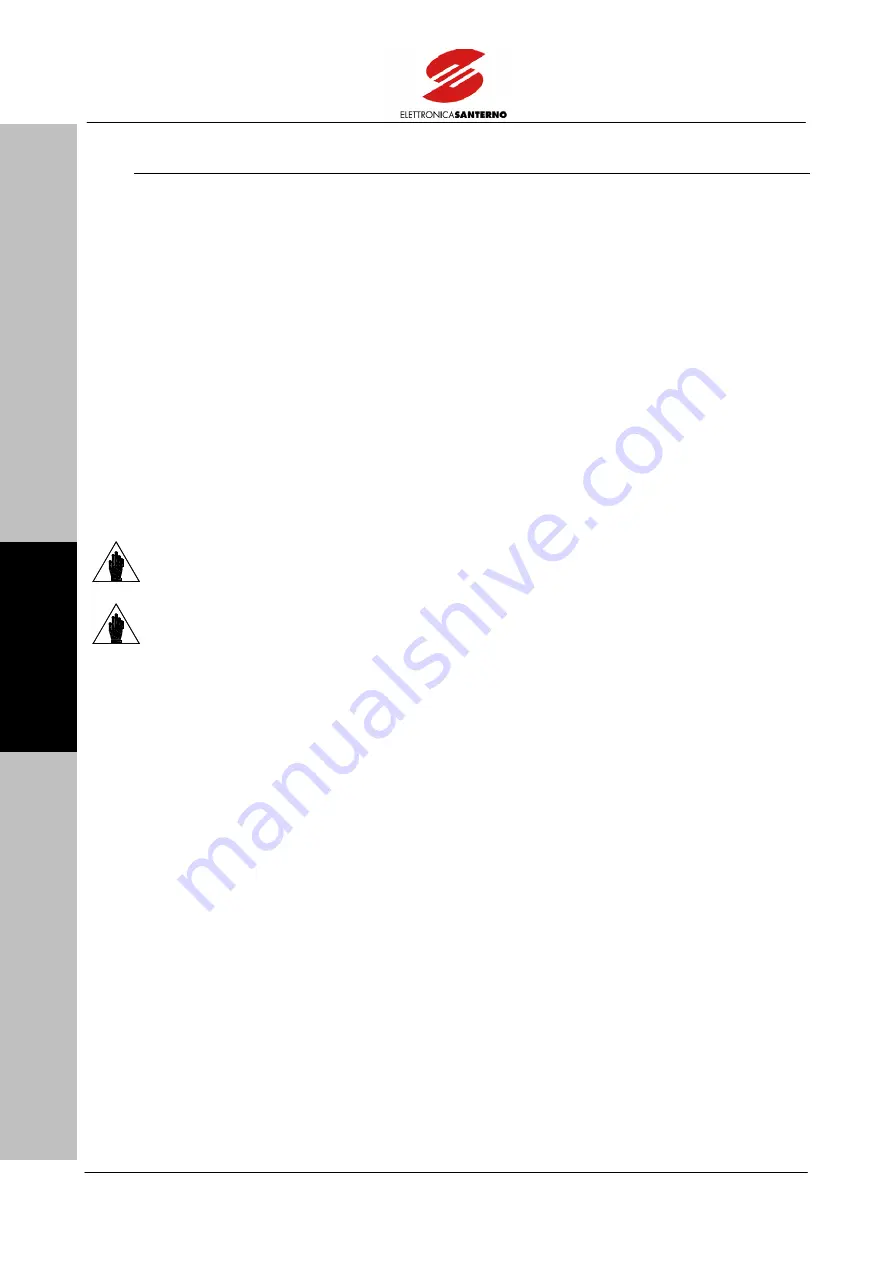
REGENERATIVE
SINUS PENTA
APPLICATION
32/
140
0
1
2
3
4
2.5.
APPLICATIONS OF THE REGENERATIVE DRIVE
2.5.1.
M
OTORS
H
AVING A
D
IFFERENT
S
UPPLY
V
OLTAGE THAN
THE
M
AINS
S
UPPLY
V
OLTAGE
The regenerative drive produces a bus voltage higher than the rectified mains voltage; in the drive controlling
the motor, which is powered by a DC voltage greater than the mains voltage, the output voltage can exceed
the mains voltage (a drive is capable of generating a max. voltage equal to the bus voltage divided by 1.41).
As a result, motors having greater voltage ratings than the mains voltage can be controlled by the
regenerative Penta. More precisely, a motor with the same rated voltage as the bus voltage divided by 1.41
can be used, or operation at constant torque can occur even when exceeding the rated motor frequency.
For example, if the regenerative drive is factory-set to generate 700VDC as the bus voltage, the output voltage
of the motor drive can be 496VAC. Supposing that a standard 50Hz/400V motor is used, the parameters
relating to the rated frequency and the rated voltage of the connected motor can be set to 60Hz and 480V
respectively for the motor drive. In that way, the connected motor operates with a constant V/f pattern up to
60Hz, thus increasing power by 20%.
NOTE
Make sure that no electric and/or mechanical trouble occurs when using the motor
at different voltage/frequency ratings than its rated voltage/frequency. Please
contact the motor manufacturer.
NOTE
Make sure that the regenerative drive is properly dimensioned (see section above).
















































